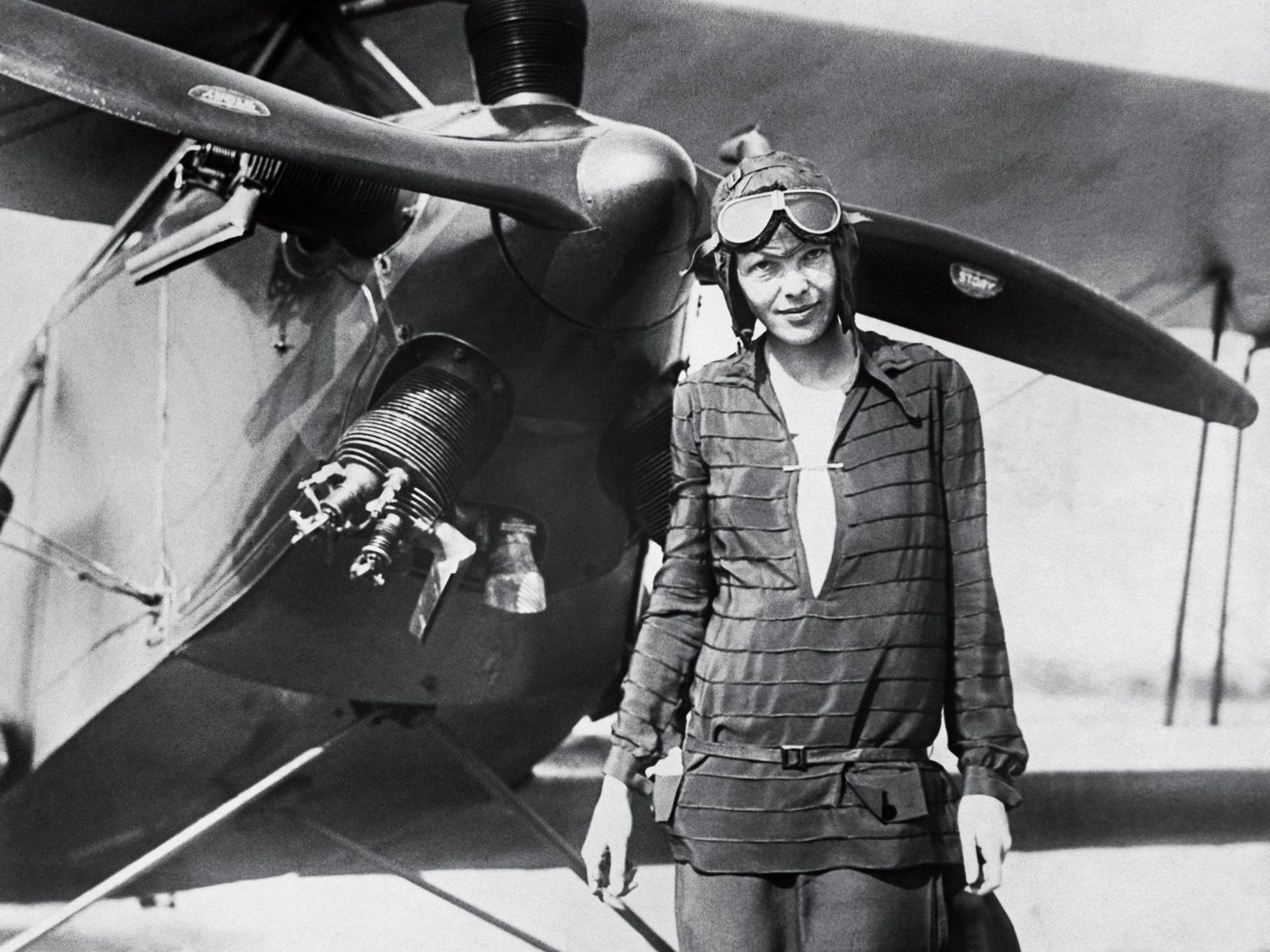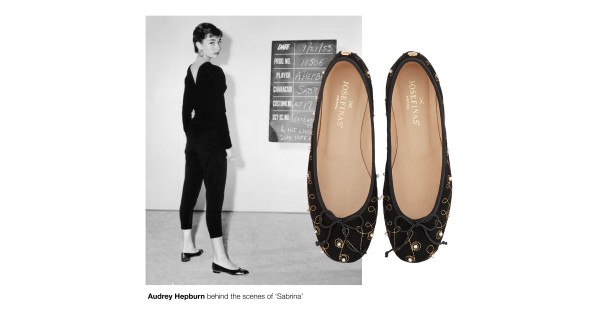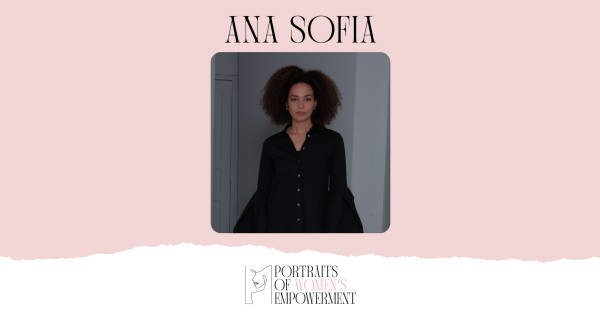Amelia was born in 1897 in Kansas, in the United States of America. Growing up with an unconventional education, she showed a huge desire to break away from gender roles from an early age: her grandmother used to hate her choice of clothing and, unlike the other girls, climbing trees was part of her daily life.
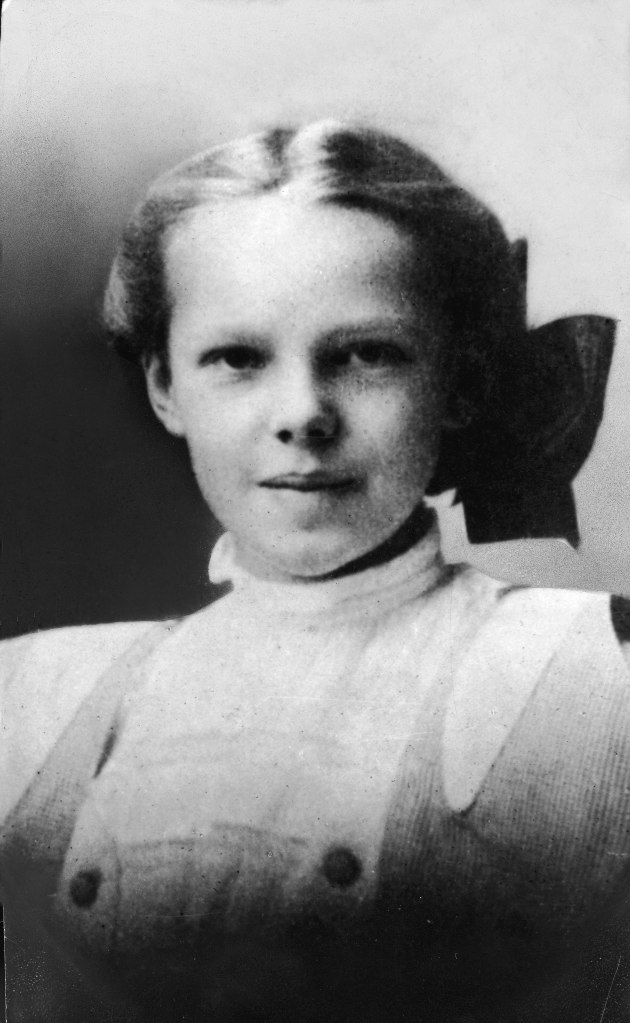
In high school, Amelia had a newspaper scrapbook where she kept records of other women who were successful in male worlds without imagining that, one day, she could be in the books of other teenagers for the same reason.
Amelia was an avid reader, thirsty for knowledge, and a born adventurer. After finishing high school, she left for Toronto (at the outbreak of World War I) and, wanting to make a difference, became a volunteer assistant nurse for the Red Cross in a military Hospital.
By this time, the Spanish Flu was arriving to Toronto, which led her to become even more involved in her duties. At one point, she too became ill: Amelia suffered from pneumonia and sinusitis (a problem that accompanied her almost all her life), was hospitalized and operated (without much success) several times, which made her connect even more to reading and poetry, learning to play banjo and also some notions of mechanical engineering.
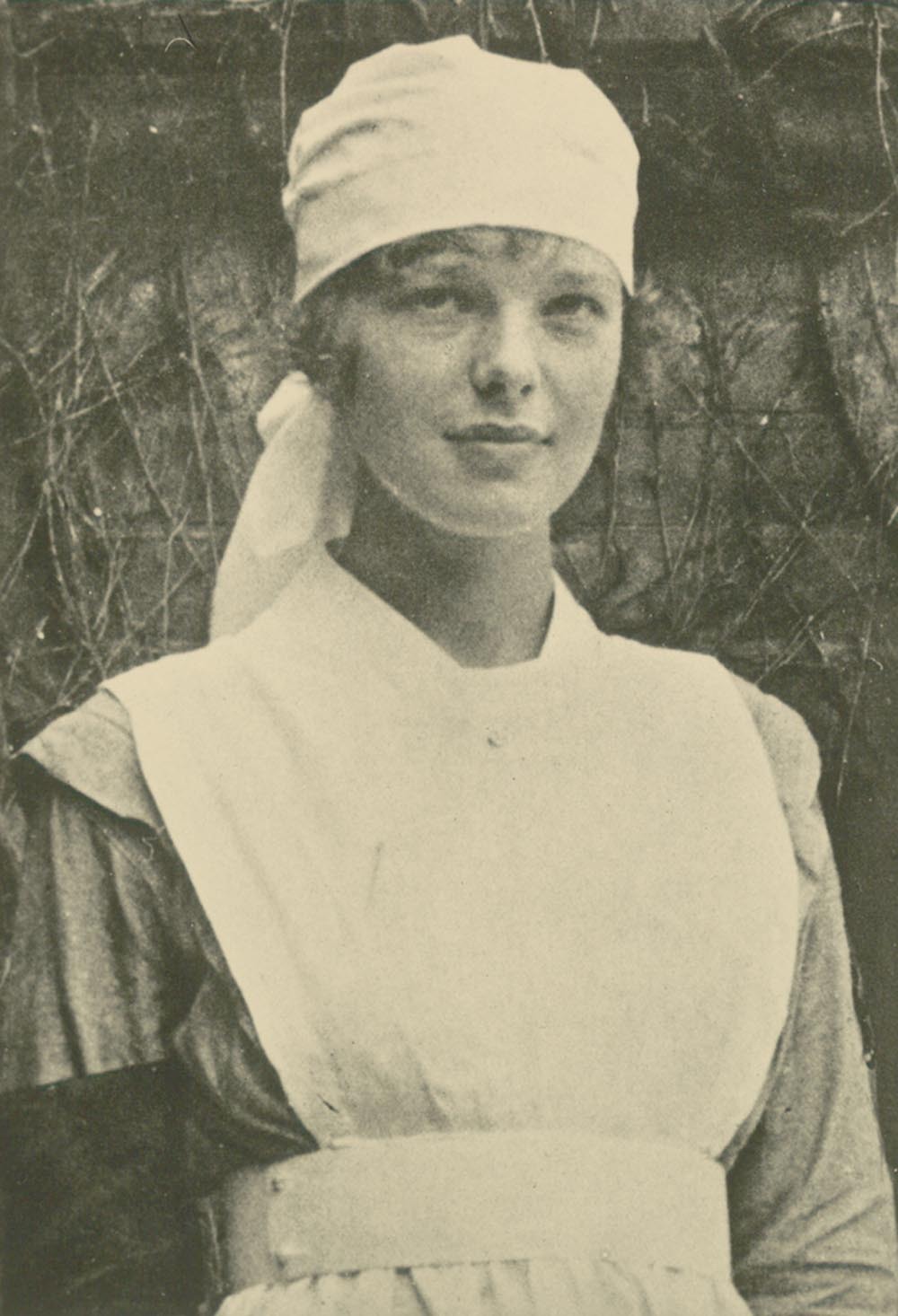
After recovering, Earhart visited an aviation fair... Right then, her desire to fly was born. For a year she attended a course at Columbia University in medical studies, but eventually dropped out to return to California with her parents. It was in Long Beach, in the company of her father, that she visited an airfield in which she flew with famous pilot Frank Hawks and fell decidedly in love with aviation!
After the experience, she was determined to learn to fly and, to do so, she had multiple jobs that helped her finance the lessons. By luck (or fate), her teacher was Anita Snook, also a pioneer pilot in this traditionally male world!
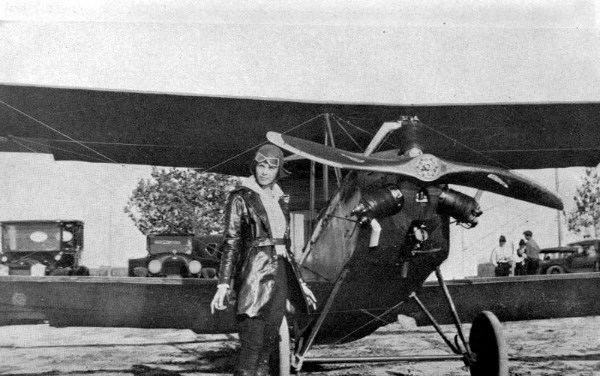
Amelia bought her first aircraft in 1921, a yellow Kinner Airster she nicknamed “The Canary”. A year later, she was already breaking altitude records, and the following year, she became the 16th woman in the world to have a pilot's license in the United States of America.
The 20s were challenging, and the pilot struggled with family financial problems and her own health problems. She had to sell her plane, was hospitalized once again, and needed to follow a different path, away from the dream of aviation. Back in California, she was hospitalized and operated on. After recovery, her goal was to return to university, but the financial problems that plagued her family forced her to give up this plan and that of joining the MIT.
It was then that she worked as a teacher and social worker, but the dream of flying did not disappear for a second!
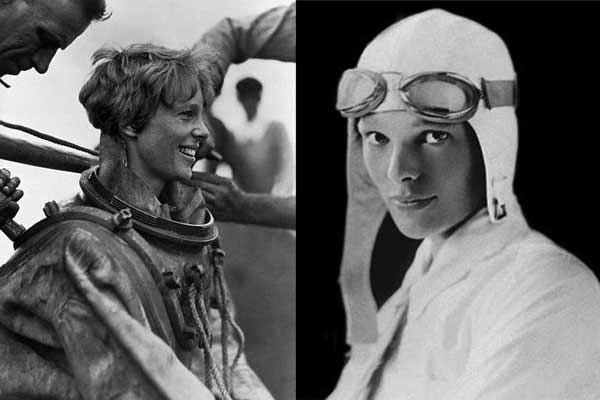
Later, Amelia became a member of the American Aeronautical Society's Boston, which she chaired. Because she was determined and continued to invest in this field, she worked as a commercial at Kinner Aircraft and wrote columns in newspapers, through which she promoted aviation, and in an organization of female pilots.
After Lindbergh's epic solo flight over the Atlantic in 1927, pilot Amy Guest wanted to be the first woman to do so, but considering the journey too dangerous, it was Amelia who, in April 1928, accepted the challenge. That same year, she was the co-pilot of Wilmer Stultz on a nearly 21-hour flight that landed in Wales.
After this transatlantic flight, Amelia's image was used to promote everything: her aviation books, her lectures and tours, even brands of suitcases, cigarettes, and clothes. Her image had a je ne sais quoi of mystique and, at this point, a wide variety of promotional items with the Earhart name would emerge, catapulting her to success – a clothing brand, a collection of travel bags, among others.
This was the best way to fund her travels. After this adventure, Amelia became editor of Cosmopolitan magazine, where she continued her campaign for gender equality in aviation. In 1929, she was among the first aviators to promote commercial air travel, investing time and money into making this dream a reality – Amelia also became vice president of National Airways.
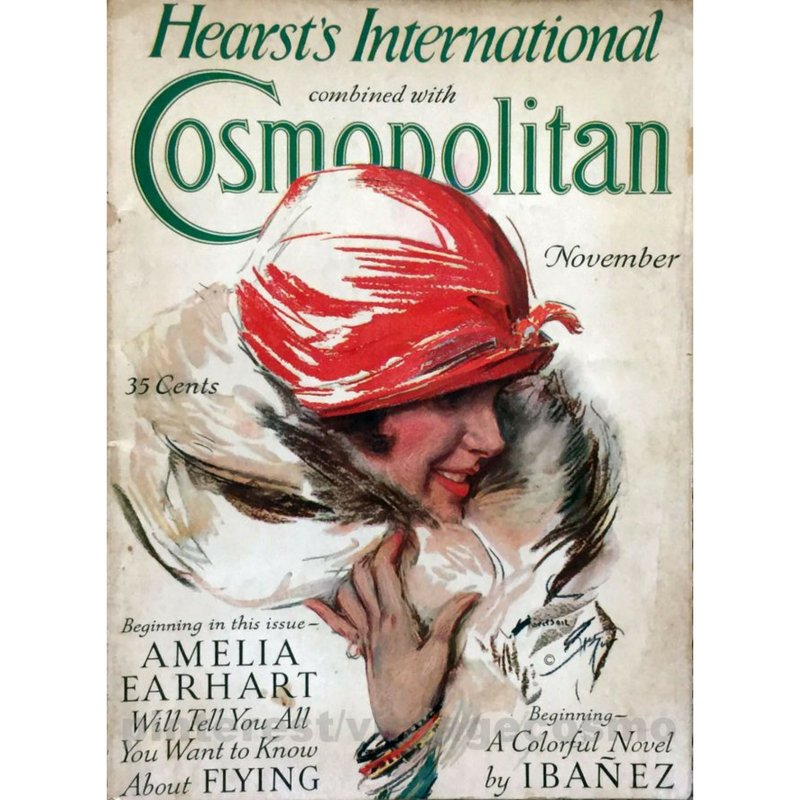
Despite the growing success, Amelia's life lacked the creation of a record exclusively of her own, and so she set off to make her first long-distance solo flight. The trip of August 1928 made her the first woman to fly across North America and return. Her aviation skills grew and, with them, the recognition of other professional pilots.
For a brief period, Amelia entered air racing and then became an officer of the National Aeronautic Association, where she promoted the setting of separate records for women and men, and became an essential element of the Fédération Aéronautique Internationale. It was then that Amelia founded and chaired an organization of female pilots - the Ninety-Nines - which provided support to women in aviation.
In May 1932, at the age of 34, Amelia completed her first solo transatlantic flight. She set off from Harbour Grace, Newfoundland, and landed almost 15 hours later – after going through strong winds and northerly winds, icy conditions, and even mechanical problems – at Culmore in Northern Ireland.
Becoming the first woman to fly solo, without stops, over the Atlantic, she received The Distinguished Flying Cross from Congress, as well as the Cross of Knight of the Legion of Honor from the French government, and the Gold Medal of the National Geographic Society from President Hoover.
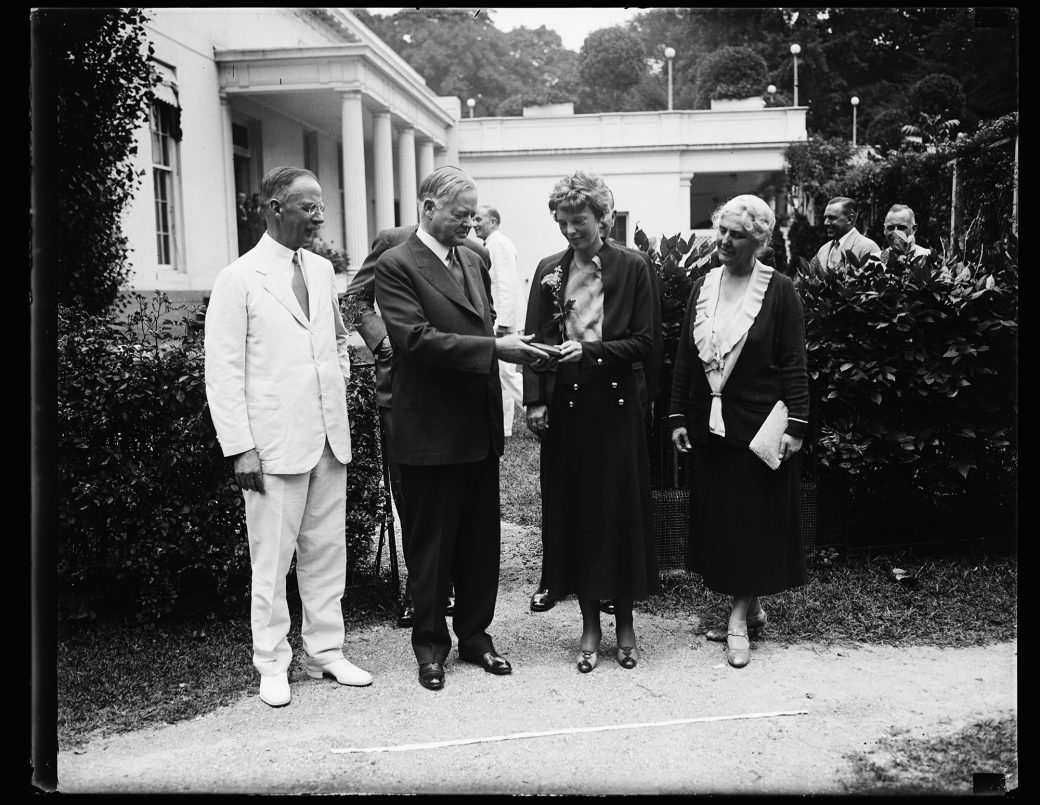
In 1936, Amelia was a board member of Purdue University as a technical consultant in the Aeronautics Department, and it was there she began to dream of the first round-the-world flight.
The following year, she set off with Fred Noonan as her navigator to make this trip in her Lockheed Electra. In June, the duo began the 29 000 mile (47 000 km) journey from Miami eastward. In the following weeks they made several stops to refuel, and by the end of the month they had already travelled 22 000 miles (35 000 km).
A few days later, they headed for Howland Island, about 2 600 miles (4 200 km) away. A troubled trip was already expected, especially since the small coral atoll is difficult to locate - for this reason, Navy ships signaled the route. The team was in constant radio contact and the U.S. Coast Guard, waiting for them near Howland, but it was on one of these transmissions that Amelia warned that she was running out of fuel. An hour after this announcement, Earhart made her final transmission.
Nine years before this trip, Amelia Earhart had married editor George Putnam. As in life, Amelia's view of marriage was liberal and George respected this freedom. Their love story is one of union and respectful communion, one which is worth knowing - in the book “Last Flight”, published in 1937, some entries from diaries, letters and other materials that Amelia will have sent to George along this trip are included.
The plane is believed to have disappeared 100 miles (160 km) from Howland Island. Earhart and Noonan were reported missing at sea after a few days of thorough investigation.
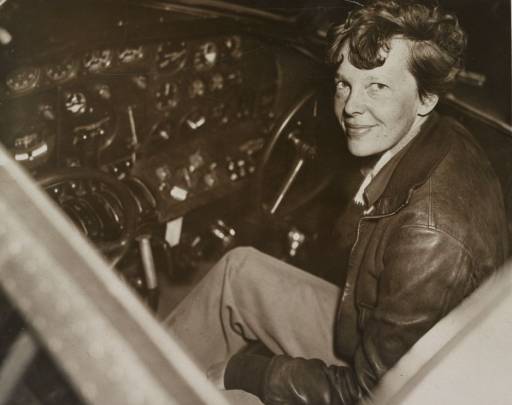
The mysterious disappearance of Amelia Earhart captured the attention of the whole world and has generated, to this day, thousands of theories. For 84 years, Amelia has been the inspiration for dozens of books, films, and documentaries.
Earhart is truly an inspiration to all of us, and very soon we will introduce the Josefinas Amelia, inspired by this Power Woman, who lived ahead of her time and who fought so hard for women's rights.
